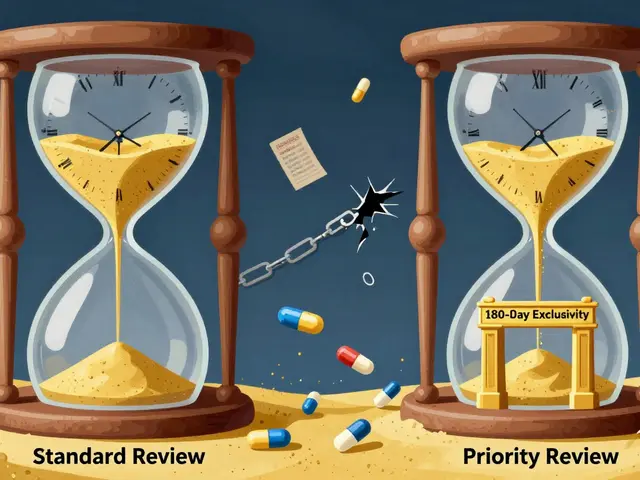Ibuprofen: Uses, Dosage, Side Effects & Safe Tips
Ibuprofen is a common over-the-counter pain reliever and fever reducer. You probably reach for it for headaches, muscle aches, tooth pain, or a fever. It’s an NSAID (nonsteroidal anti-inflammatory drug) that lowers inflammation and eases pain—fast when used correctly.
Use the lowest effective dose for the shortest time you need. For most adults, OTC dosing is 200–400 mg every 4–6 hours as needed. Don’t exceed 1,200 mg in 24 hours unless a doctor tells you otherwise. Doctors may prescribe higher doses (up to 2,400 mg/day) for some conditions, but that raises risk and needs monitoring.
Practical tips for taking ibuprofen
Take ibuprofen with food or milk to cut stomach upset. Avoid taking it on an empty stomach if you have a history of ulcers or gastritis. Keep hydrated—NSAIDs can affect kidney function, especially if you’re dehydrated or already have kidney issues.
If you have high blood pressure, heart disease, or are on blood pressure meds (ACE inhibitors, ARBs, or diuretics), check with your doctor before using ibuprofen regularly. It can reduce the effect of some blood pressure drugs and, combined with diuretics, raise the risk of kidney problems. Also be cautious if you’re on blood thinners like warfarin—ibuprofen can increase bleeding risk.
Kids, pregnancy, and when to avoid ibuprofen
For children, dosing is weight-based. A common rule is about 10 mg per kg every 6–8 hours, not exceeding 40 mg/kg per day. Always use a pediatric formulation and follow the label or your pediatrician’s instructions. Don’t give ibuprofen to infants under 6 months without medical advice.
Avoid ibuprofen in the third trimester of pregnancy—it can cause issues for the baby’s heart and reduce amniotic fluid. Pregnant or breastfeeding? Talk to your healthcare provider first. If you have active peptic ulcer disease, a known NSAID allergy, or aspirin-sensitive asthma, skip ibuprofen and ask for alternatives.
Watch for warning signs: black or bloody stools, severe belly pain, sudden shortness of breath, chest pain, or a sudden severe headache. Those need immediate medical attention. If fever lasts more than 3 days or pain persists beyond 10 days, see a clinician instead of self-treating.
Short-term combo use with acetaminophen is sometimes safe for stronger pain relief—use correct doses and don’t exceed limits for either drug. Don’t mix multiple products that contain ibuprofen without checking labels.
Buying tip: choose reputable pharmacies, check expiry dates, and store meds in a cool dry place. For chronic pain, talk to your doctor about safer long-term plans—lower doses, topical options, or non-drug therapies can cut risks.
Final practical rule: use the smallest dose that helps, for the shortest time you need. If anything worries you—side effects, interactions, or ongoing symptoms—ask a healthcare professional.
Motrin: Everything You Need to Know About Ibuprofen Pain Relief
Find out what Motrin is, how it works, when to take it, and what side effects to watch for. This article explores the science behind Motrin, tips for safe use, myths about ibuprofen, and answers common questions. Get trustworthy, practical info to take charge of your pain relief decisions.






